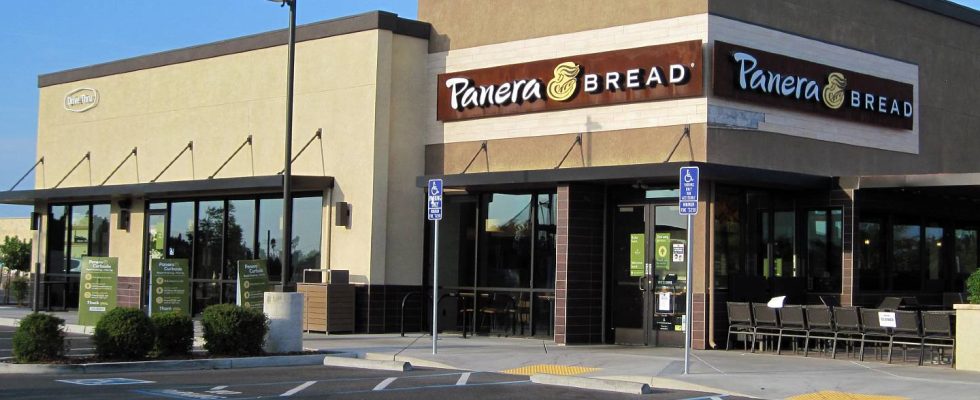Economy
/
February 26, 2024
It used to make on-site sourdough. Now, the private-equity-owned chain is better known for its (allegedly) killer lemonade.
Lemonade is not generally known to be fatal—unless it’s from Panera Bread and infused with more caffeine than a 12-ounce Red Bull poured into a 16-ounce Monster Energy drink. For select customers, it also comes with unlimited refills. In which case, yes, it could kill you. So alleges a wrongful death suit filed against the fast-casual chain last October by the family of 21-year-old Sarah Katz, who, after knocking back a 30-ounce Charged Lemonade in September, went into cardiac arrest and died. Sarah had a heart condition that, at the recommendation of doctors, kept her away from caffeinated beverages. Katz’s family alleges Panera failed to properly warn Sarah and other customers of the risks.
By the time of the lawsuit, Charged Lemonade had already claimed a second victim: 46-year-old Dennis Brown, who went into cardiac arrest after downing three of the beverages in Fleming Island, Fla. Brown, who had a “unspecified chromosomal deficiency disorder” along with “a developmental delay and a mild intellectual disability,” also avoided energy drinks on account of his high blood pressure. In January, a third person sued Panera, alleging the refreshment gave her “permanent cardiac injuries.”
When unveiled in early 2022, Charged Lemonade—a “plant-based and clean” “fruit-forward” concoction purportedly containing about as much caffeine as Panera’s dark roast coffee—seemed innocuous, unlikely to garner more attention than the latest soup-and-salad duo. But in between the deaths of Katz and Brown, the turbo lemonade went viral, causing some stores to relocate the drink rack behind the counter as a safety precaution. Last October, the company went further, adding a warning sign: “Not recommended for children, people sensitive to caffeine, or pregnant or nursing women.” The lawsuits may eventually send Charged Lemonade the way of Four Loko, which was pulled from the market after plaintiffs successfully argued that the drink known as “blackout in a can” did not make clear the threat it posed to heart, liver, and kidneys.
Current Issue
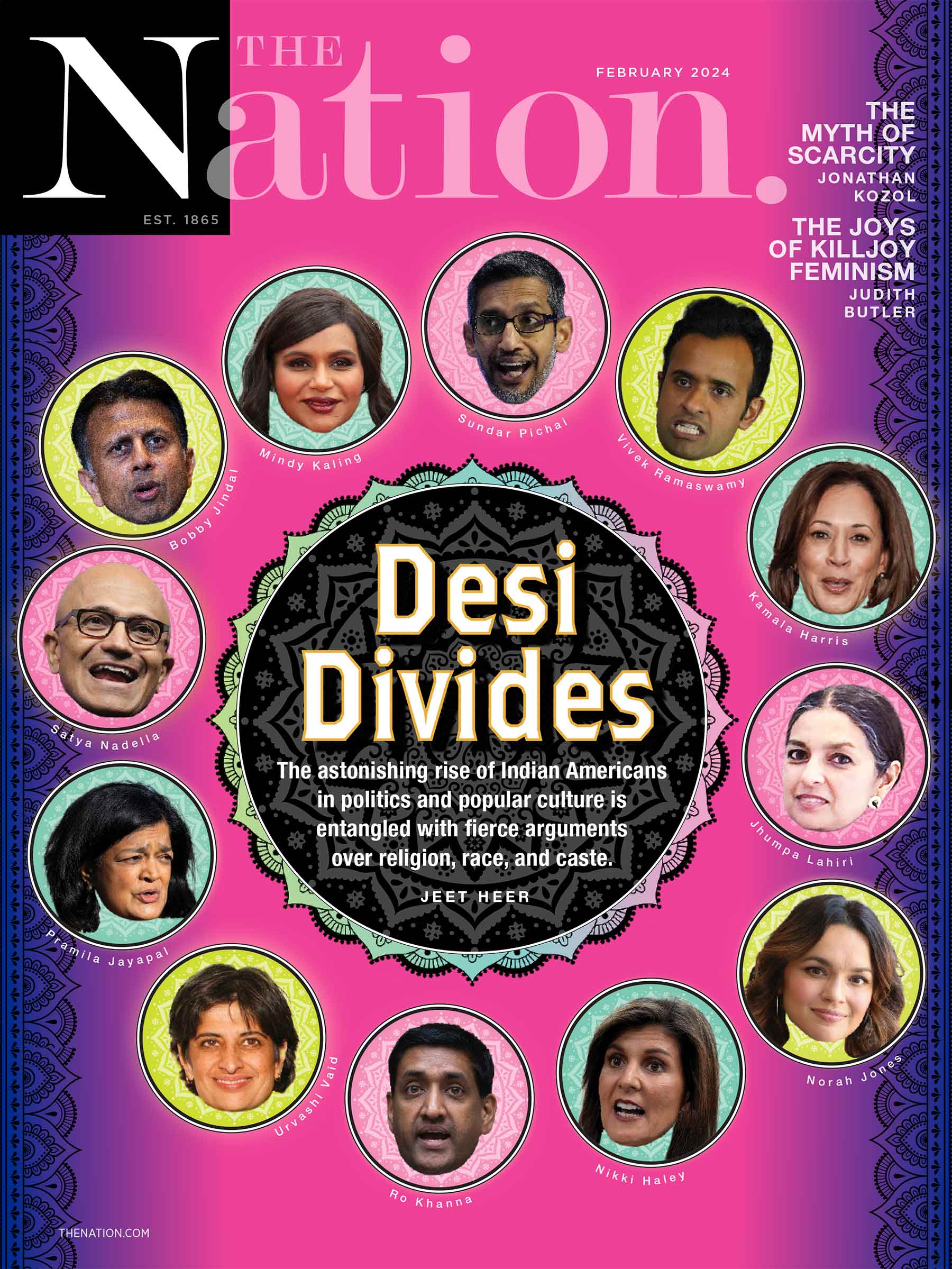
Panera wasn’t always known as a corporate purveyor of murderous lemonade. Once upon a time, in the cozier, Clintonite 1990s, it was known for its San Francisco sourdough. Originally founded in 1987 in Kirkwood, Mo., as something of an anti–Wonder Bread, the St. Louis Bread Company made everything on-site. For sourdough, water and flour have to be weighed to the gram if you want it to crunch on the outside while maintaining an airy, fluffy, inside. “It’s difficult for a large commercial bakery to create that type of product,” founder Ken Rosenthal told local news audiences in 1987.
The drink menu pushed roasted coffee, and a cup of water came with a slice of lemon. Initially, carbonated drinks were limited to Jones Soda, a small, independent company based in Seattle. Light jazz wafted from the speakers, and the smell of fresh-baked bread permeated the café. When I was growing up in St. Louis, a staple of the Bread Company was its broccoli-cheddar soup—a hearty dish served in a sourdough bread bowl.
The Bread Co. décor embodied what would become known as Global Village Coffeehouse (GVC), a term used describe a faux-sophisticated aesthetic adopted by fast-growing corporations of the 1990s like Starbucks, Barnes & Noble, and Borders. Warmer and folksier than the reigning style in fast-food outlets and big-box stores across the country, the GVC vibe was pure ’90s optimism. The Cold War was over, and so capitalists could finally chill out with a paperback and a grande latte. Business could become “ethical” and “conscious.”
At the St. Louis Bread Company, this meant bronze, tan, and moss green. It meant hand-drawn swirls, faux woodcut prints, and framed monochrome photographs of fresh bread. The uncomfortable chairs and booths found in fast-food joints of yore, designed to prevent customers from hanging around, were replaced by large couches and sofas that Friends could hang out on. Everything in Bread Co. was an upgrade on the lifeless homogeneity of a McDonald’s. Within six years of its founding, Bread Co. grew from one to 20 locations. Rosenthal had caught the wave—he used a playful, “authentic” brand identity to turn a local bakery into a successful regional chain.
In the aesthetics of GVC, there are traces of a bowdlerized utopia: rough, irregular borders and lines in furniture spoke to the value of craftsmanship. Signs were hand-drawn for the sake of sincerity. Products would not come in metallic foils but in biodegradable textured paper wrapped up in twine. As Evan Collins writes for Are.na, GVC hijacks “Keith Haring’s signature simple figures, motion/expression lines, and themes of human emotion and unity.” Any social meaning, however, was filtered out of GVC designs, which Collins writes, are “stripped of their political themes and re-contextualized to fit commercial applications.” As Meagan Day points out in her Jacobin article “The Romance of American Clintonism,” there was nothing to be done about the rise of corporate power, but the GVC vibe put a more friendly, individualized face on consolidation in the market.
What turned the Bread Company into Panera were several rounds of corporate mergers and acquisitions. In 1993, Ken and Linda Rosenthal sold their company to Au Bon Pain, a dessert bakery chain started in 1978, for $23 million. It soon went public. “Fast-food chains had become like self-service gasoline stations for the human body,” declared CEO Ron Shaich, who saw the Bread Co. model—and the Global Village Coffeehouse—as the future of American fast-casual dining. There should be no processed foods. There should be no frozen dough. Everything should be fresh.
And it worked. In 1997, Au Bon Pain changed the name of its restaurants to Panera, a word distantly related to breadbasket. Over the next two years, the company stock price exploded by 2000 percent. But in 1999, a private-equity company swallowed Au Bon Pain, and therefore Panera, and things started to change. As fast-food culinary critic and former Simpsons writer Bill Oakley told me, “Places that are bought by private equity always start to suck.”
Today the fast-casual chain operates 2,300 worldwide locations serving Chicken and Pepperoni Mozzarella Melts. In expanding, the charm faded, and then vanished. Now, Oakley said, Panera has “the look and feel of a hospital cafeteria. It’s where middle-aged people go to have unpleasant conversations.” How did Panera fall so far? Its takeover by private equity certainly has something to do with it—but more so, the GVC mask of a more humane capitalism slipped off.
Panera certainly tried, for a while, to keep up the act that it was a different kind of company. In 2010, it started a nonprofit division called Panera Cares. It was given the mission of conducting conscious capitalism through a string of experimental “pay-what-you-wish” stores in St. Louis, Dearborn, Portland, and Chicago. These “Cares cafes” looked like regular locations except all pricing was suggested. Confusing signs near the registers explained that customers had entered a “cafe of shared responsibility,” and that “those with the means” were encouraged to pay more to subsidize the have-nots. Shaich hoped wealthier customers would pay more, enabling poorer customers to eat for less. “In many ways, this whole experiment is ultimately a test of humanity,” he said in a TEDx talk. “Would people pay for it? Would people come in and value it?”
In Shaich’s vision, the Cares cafes were supposed to be “a new breed of business to attack the growing epidemic of food insecurity in America,” creating “community-based” locations where people could eat nutritious food in “an uplifting environment and pay whatever they can afford.” But according to NPR, the stores soon “started telling customers that if they didn’t have enough money to pay, they could volunteer for an hour in exchange for a meal, clean under the counters.” Panera wanted to engage in cost-neutral altruism; it wound up inventing a hybrid food bank and workhouse.
Popular
“swipe left below to view more authors”Swipe →
In 2017, researchers Giana Eckhart and Susan Dobscha published an independent study of the initiative in the Journal of Business Ethics. They found that everyone involved—workers, customers—experienced physical, psychological, and philosophical distress: “Consumers have disdain for the embodied experience of dining near the food insecure in the physical space of the café,” Eckhart and Dobscha write, “and they question Panera Cares’ motives for engaging in conscious pricing.” The experiment degraded everyone: “The food insecure experience discomfort,” they write. “Rather than being empowered via a dignified dining experience, they feel ashamed or uncomfortable when trying to pay what they can for their food. Our findings suggest a pushback against tasked responsibilization.”
That dystopian and ungainly word, responsibilization, is a technique that can apply to anything from a pay-what-you-can donation scheme to neoliberal governance. Whether the social ill is the hungry or the unhoused, responsibilization puts the onus on the individual. “Consumers,” the study continued, “are now expected to address a wide variety of social issues through their individual consumption choices (e.g., global warming, income inequality) whereas in the past these issues would have been addressed structurally by governments, as part of a broader movement of individualization.” “Rather than companies, governments, and NGOs leading the way,” the study continues, “consumers become the central problem-solving agent, with the perceived power coming from consumers’ wallets.” At these special locations of a company with a market capitalization in the billions, customers were supposed to believe it was, in part, their responsibility to feed their starving neighbors.
“Conscious” pricing to solve food insecurity in America is a plan that could only be hatched by the lanyard class—those who do not live near or among poor people and are perpetually rehearsing a TED talk in their head. In 2019, Panera unceremoniously brought its grand experiment to a close, noting that the scheme was no longer “viable.” The veil had fallen: A for-profit company could not solve societal problems that, in the solving, won’t break even, let alone produce a respectable return on investment.
Perhaps the last relic of the GVC aesthetic and ethos at Panera is its logo: a woman cradling a loaf of sourdough, a final gesture at artisan pretentions. At some point, the company stopped making its dough in-store, and sourced pre-bake mixes that could be distributed to several locations and heated up, bowing to the gospel of “quality control” and efficiency. As the company has expanded, the stores have become increasingly homogenous, resembling the fast-food chains Bread Company began as a reaction against. What was once good became merely decent—and then, for anyone who has recently tasted one of their simultaneously dry and soggy tuna sandwiches, it just became sad.
The cozy aesthetic of the Global Village Coffeehouse—along with “conscious capitalism”—has gone the way of the dodo, especially since 2020. “In the pandemic,” Oakley pointed out, “with dining rooms closed everywhere, people started using the drive-through. And restaurants decided they didn’t need dining rooms.” The forecast looks like more isolation, and fewer “third places.” This trend is evident in the futuristic “Taco Bell Defy,” where chicken quesadillas will be vended directly to consumers through pneumatic tubes, like a drive-through taco bank. Or theCosMc, which is McDonald’s attempt to break intothe café market with a nostalgic-futurist aesthetic, “all designed to boost your mood into the stratosphere, if only for a few moments.”
In 2021, Panera Bread, Caribou Coffee, and Einstein Bros. Bagels told Restaurant Business that they would pursue merging into “a new powerhouse platform in fast-casual.” The partnership intends to leverage Panera’s “broad omnichannel retail network, strong digital infrastructure,” and “robust food innovation pipeline,” which has produced such delights as “Charged Lemonade.” To call a sandwich shop a “platform” is to approach the limits of sanity. It raises the question: What even is the point of a restaurant? Is it to smash things together until they merge into an omnidirectional cooperation? An entity that undergoes so many mergers and acquisitions and IPOs that the food itself becomes entirely beside the point?
These heightening contradictions speaks to how Panera—along with its GVC brethren like Starbucks—have jettisoned commitments to a more conscious capitalism in pursuit of growth. Currently, Panera is “slimming” in preparation of going public for a second time. In November 2022, it axed 17 percent of its corporate staff, or about 300 employees. That year, Panera also launched its first pick-up-only store on Chicago’s North Side, which is merely a kitchen attached to a lobby, with some nooks carved out for order pickup. To-go only stores will soon expand across the country. Forty-four percent of Panera locations are now “Next-Gen bakery-cafes,” which include dual drive-throughs. It sounds a lot like McDonald’s.
More from The Nation
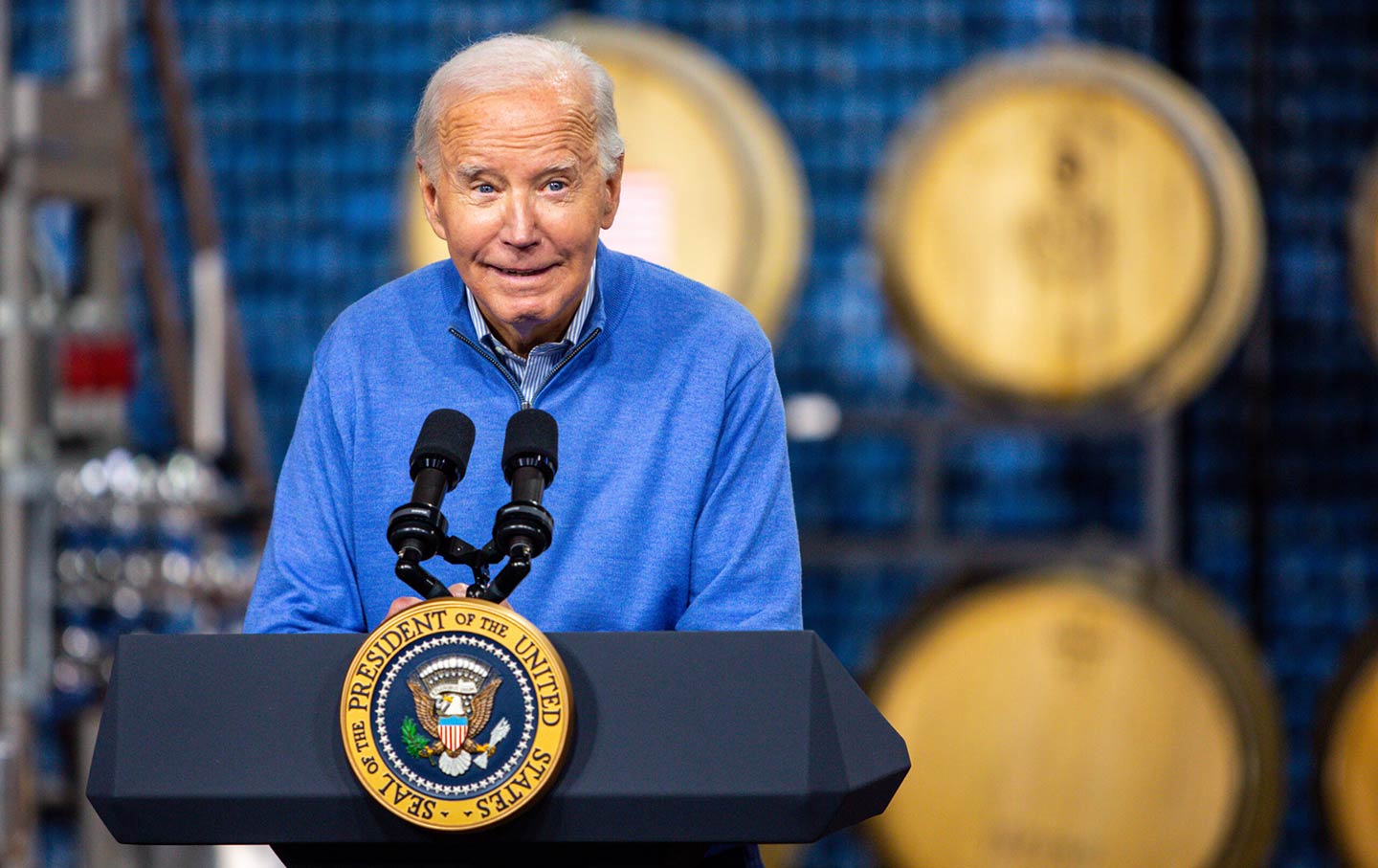
The economic picture under Biden actually looks great—but he’s polling poorly anyway.
Comment
/
Dean Baker

A range of so-called ESG (environmental, social, and corporate governance) funds have major investments in some of the weapons manufacturers making arms for Israel.
Sarah Sax
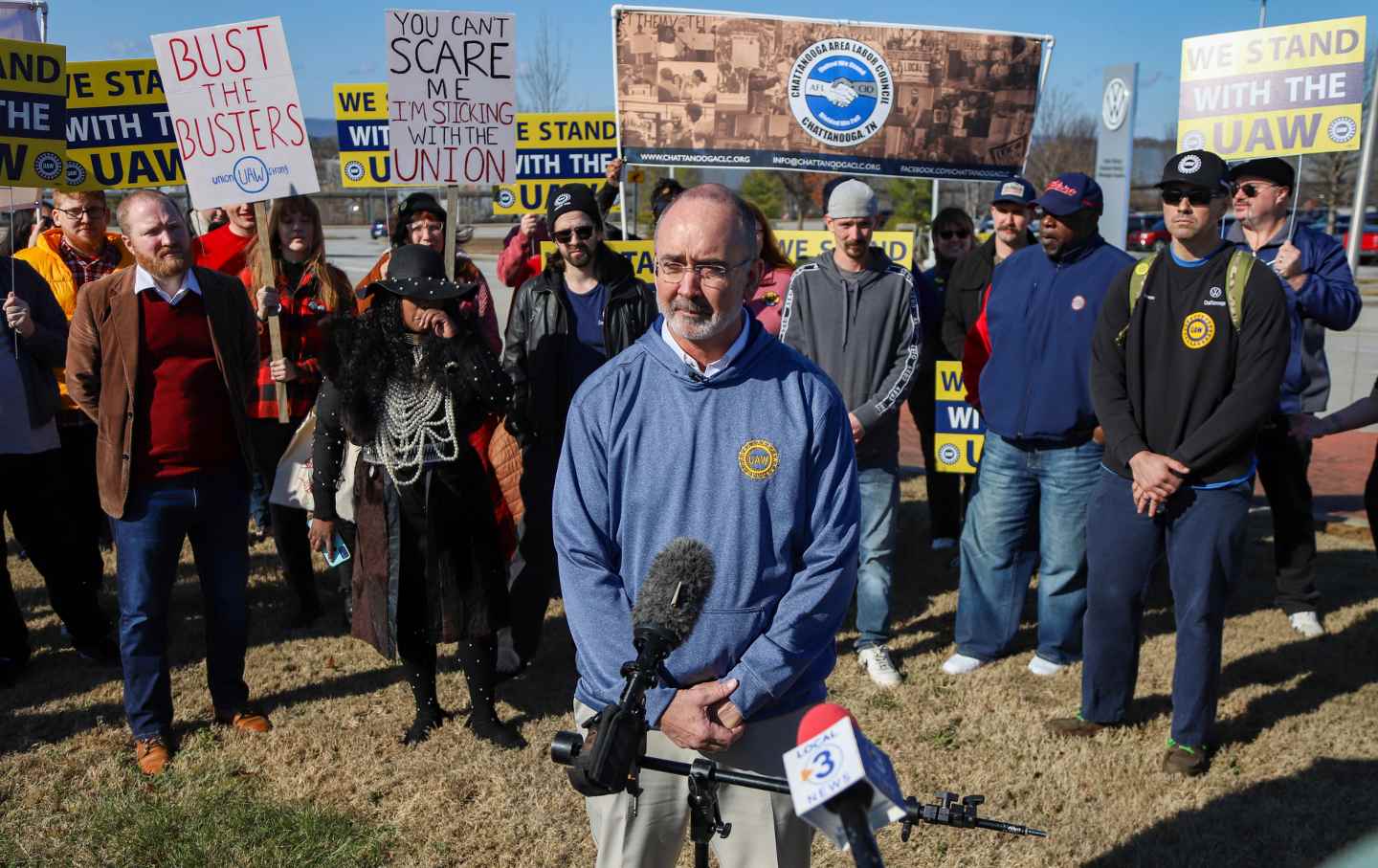
The union announced that more than half the workers at a VW plant in Tennessee have signed union cards. And it’s vowing that this is only the beginning.
John Nichols
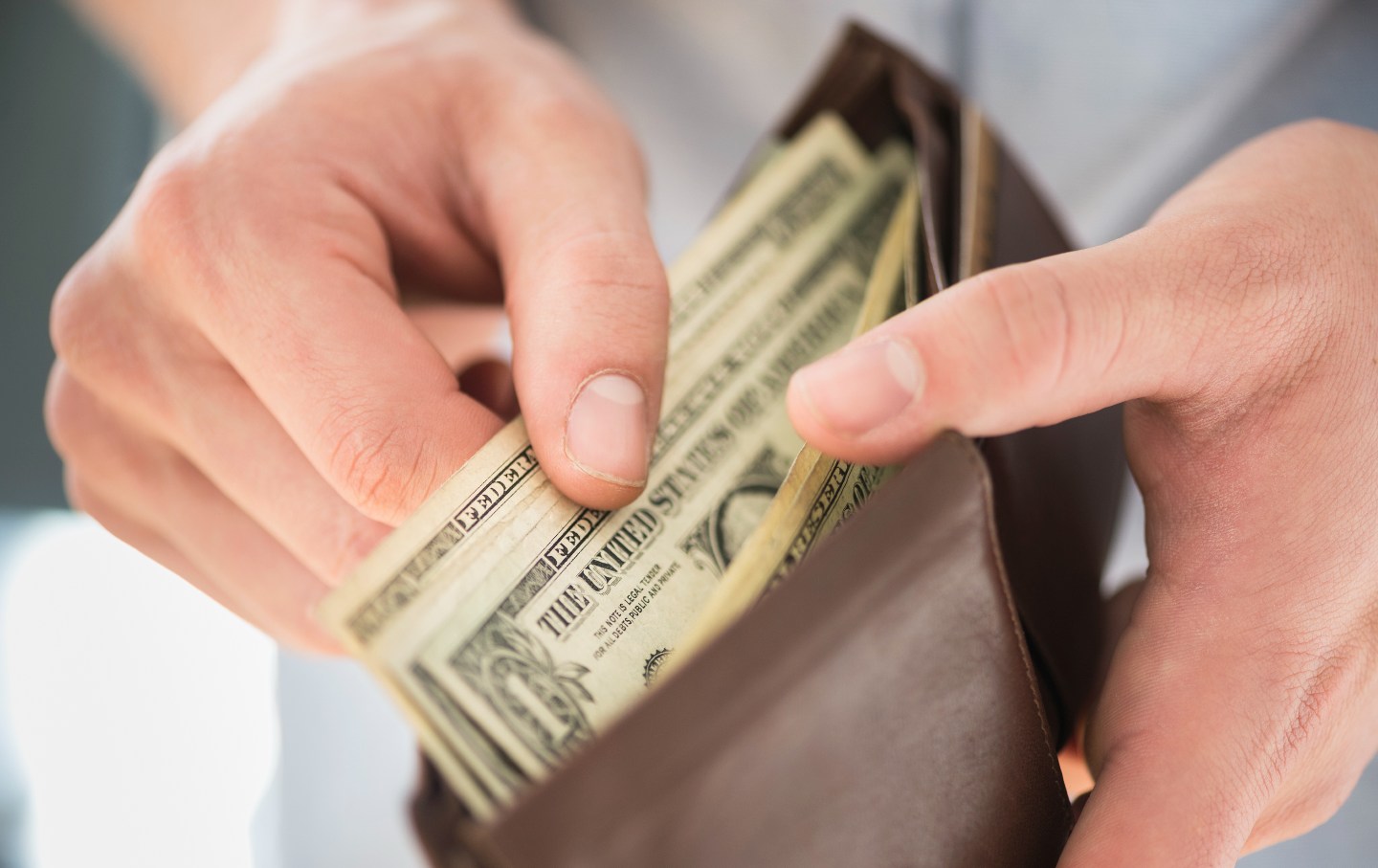
For many young people today, work often means giving up their hobbies—or being forced to monetize them.
StudentNation
/
Aina Marzia
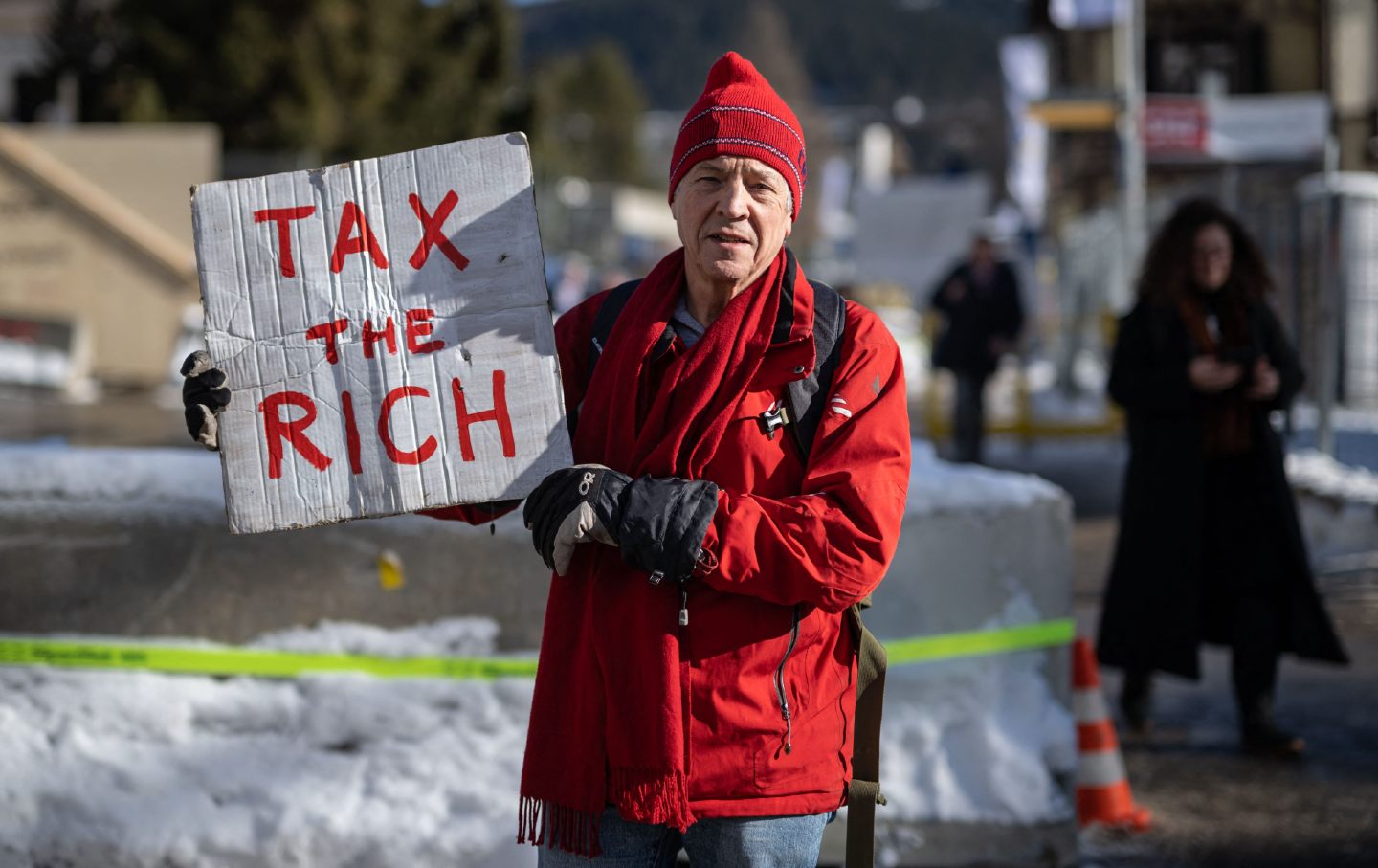
The superrich at Davos do not deserve their hoards, and the rest of the world desperately needs those resources.
Ingrid Robeyns

